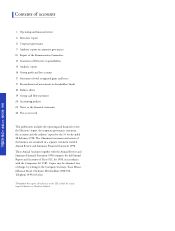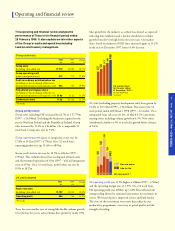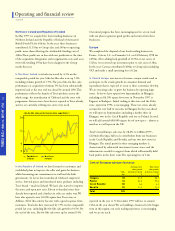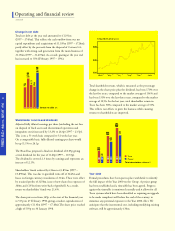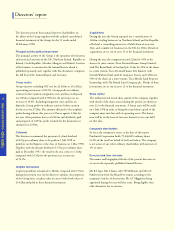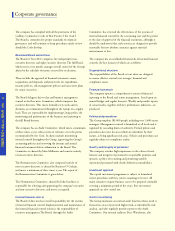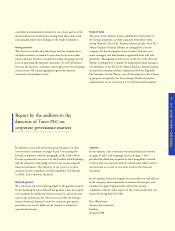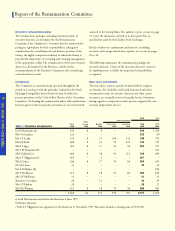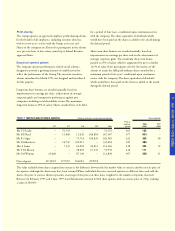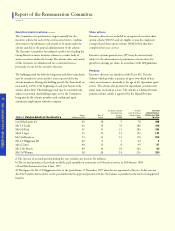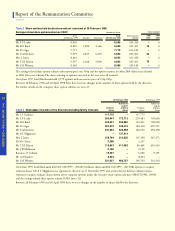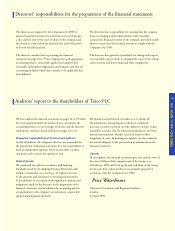Tesco 1998 Annual Report Download - page 7
Download and view the complete annual report
Please find page 7 of the 1998 Tesco annual report below. You can navigate through the pages in the report by either clicking on the pages listed below, or by using the keyword search tool below to find specific information within the annual report.
5
Economic Monetary Union
Our aim is for all the re l e vant parts of the Group to be able to
handle business in euros when required. Tesco has project groups
addressing the issues arising from EMU and is working with
external consultants.
Treasury management and financial instruments
The Group’s treasury operations are managed by Group Treasury
within parameters defined formally and regularly reviewed by
the Board. Group Treasury’s activity is routinely reported to
members of the Board and is subject to review by the internal
and external auditors.
Group Treasury uses financial instruments, including derivatives,
to raise finance and to manage risk arising from its operations.
Consistent with Group policy, Group Treasury do not engage in
speculative activity and it is policy to avoid using the more
complex financial instruments.
The main financial risks faced by the Group relate to interest
and exchange rates. The Board reviews and agrees policies for
managing these risks as summarised below.
The Board establishes annually the policy which Group Treasury
follows in managing credit risk: limited exposures are permitted
only with banks or other institutions meeting required standards
as assessed normally by reference to the major credit rating
agencies. Deals are authorised only with banks with which
dealing mandates have been agreed.
Finance and interest rate risk
The Group’s policy is to finance operating subsidiaries by a
combination of retained profits, bank borrowings, commercial
paper, medium-term notes, long-term debt market issues
and leases.
Derivatives, predominantly forward rate agreements and interest
rate swaps and caps, are used to manage our desired mix of fixed
and floating rate debt.The policy is to fix or cap between 30%
and 70% of the interest cost on outstanding debt, although a
higher percentage may be taken within a 12 month horizon.
At the year end, after taking account of interest rate swaps
£614m (1997 – £310m) or 52% of our net debt, was fixed for
a period of five years. A further £170m (1997 – £70m) or 14%,
was covered by interest caps at an average rate of 8.2% for a
period of four years.
The average rate of interest paid during the year was 8.1%
(1997 – 7.8%). Excluding capitalised interest, interest is covered
9.5 times by profit before interest (1997 – 14.6 times). A 1% rise
in interest rates would reduce profit before tax by less than 1%.
The Group ensures continuity of funding by arranging for short
term borrowings and commercial paper issuance to be fully
backed by committed bank facilities, by limiting the amount of
debt repayable in any one year, and by managing the average
debt maturity in line with gearing levels. At the year end undrawn
committed facilities amounted to £645m (1997 – £400m) and
the average maturity of net debt, including these facilities, was
over five years.
Foreign currency risk
The Gro u p’s policy is to use foreign currency borrowings, forw a r d
exchange rate transactions and swaps to offset a significant part
of the impact on the Group’s balance sheet of exchange rate
movements on the small proportion of its net assets before
financing (6%) which is not denominated in sterling.
The Group does not hedge exposure to currency movements
on the translation of the 2% of profits made overseas except to
the extent that those profits are matched by foreign currency
interest costs.
Significant transactional currency exposures resulting
predominantly from purchases in currencies other than the
subsidiaries’ reporting currencies are hedged by forward foreign
currency transactions, currency options and by holding foreign
currency cash balances.
94 95 96 97 98 I n t e rest cover (number of times)


